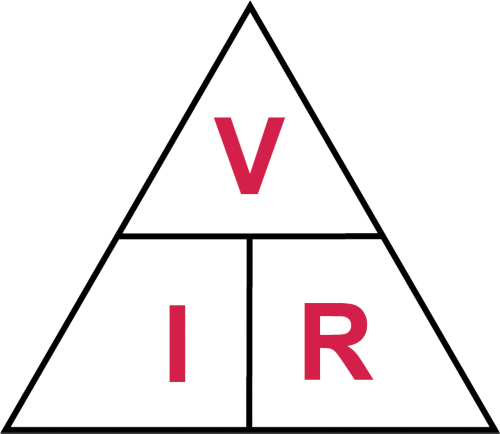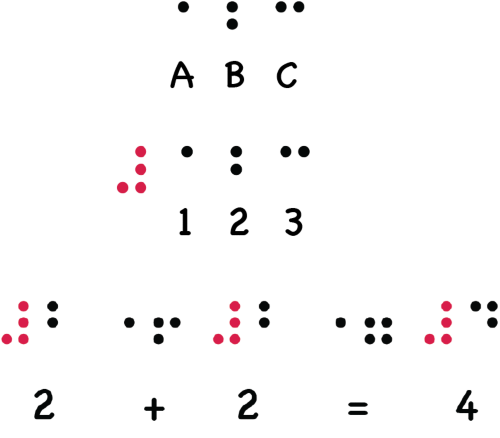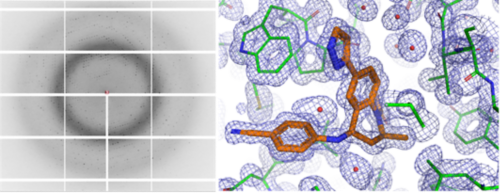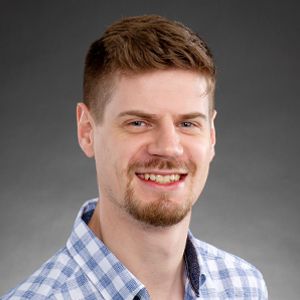St. Jude Family of Websites
Explore our cutting edge research, world-class patient care, career opportunities and more.
St. Jude Children's Research Hospital Home

- Fundraising
St. Jude Family of Websites
Explore our cutting edge research, world-class patient care, career opportunities and more.
St. Jude Children's Research Hospital Home

- Fundraising
Math behind the medicine
The shared mission of everyone who works at St. Jude – to advance cures and means of prevention for pediatric catastrophic disease through research and treatment – is only one aspect that unites the St. Jude workforce. While it takes many different people working in a variety of roles to keep St. Jude running, some skills, such as math, are universal. Math is an invisible thread that ties together all aspects of St. Jude, not just research and clinical care but also instrument maintenance, teaching, and many other jobs where the integration of math may not seem so obvious.
The first M in STEMM (science, technology, engineering, math and medicine) is important to St. Jude and provides support for the second M, medicine. The people who contribute to the institution every day use math in a variety of ways. Five employees shared the equations that they use in their work, exemplifying how math underlies progress at St. Jude.
Carmen A. Perez, MD, PhD, Department of Radiation Oncology
Carmen A. Perez, MD, PhD, a clinician in the St. Jude Department of Radiation Oncology, understands the importance of timely treatments and appropriate doses when patients undergo radiation therapy. However, sometimes patients experience unintended interruptions in therapy, such as during the COVID-19 pandemic. Interruptions can lead to a phenomenon called repopulation, wherein the cancer cells regrow, requiring more treatment.
To account for this, Perez and other radiation oncologists calculate the biological equivalent dose (BED), which measures how strong a punch is needed to kill a cancer cell.

Radiation oncologists like Carmen Perez, MD, PhD, St. Jude Department of Radiation Oncology can use biological equivalent dose (BED) calculations to account for breaks in patients’ radiation treatment.
This equation accounts for the number of treatments, n, the radiation dose per treatment, d, and the α/β ratio, which measures how sensitive a cell is to radiation. To compensate for the break in treatment, a correction factor is added, which includes a tumor repopulation factor, K, to account for the extent to which the biological effect of the daily dose is reduced by repopulation, and considers total treatment time, T, and repopulation time, TR.
Using this equation, even patients who experience gaps in their treatment can have optimal clinical outcomes.
Kenny Kellon, Biomedical Engineering
Kenny Kellon is a biomedical engineer at St. Jude, contributing to the research and clinical enterprise through equipment maintenance and construction. While the tools used at St. Jude continue to increase in complexity and functionality, the fundamental principles behind them still hold true. Ohm’s Law, first described in 1827, defines the relationship between voltage, V, current, I, and resistance, R, in an electrical circuit, and is routinely used by biomedical engineers including Kellon by means of a multimeter.

Ohm’s Law which accounts for the relationship between voltage (V), current (I) and resistance (R) is best represented as a triangle so that any two of the three factors can be used to define the remaining one, such that V = I x R, I = V ÷ R, and R = V ÷ I.
While the equipment that Kellon and the team of biomedical engineers at St. Jude help maintain involves cutting-edge technology, fundamental mathematic concepts like Ohm’s Law never change, and understanding and using them helps Kellon keep the research and clinical enterprise in top shape.
Marcie Davis, St. Jude Imagine Academy by Chili’s
Marcie Davis is a teacher for the visually impaired within the St. Jude Imagine Academy by Chili’s. When children come to St. Jude for treatment, it is vital that they receive top-level care, but also that they are supported as they continue their education. The Imagine Academy plays a key role in maintaining a child’s sense of community and routine in addition to learning.
Davis helps children who come to St. Jude with visual impairments or develop them through their treatment regimen to continue their schoolwork using Braille. Braille allows for any letter to be represented as a series of dots within a six-dot matrix. This is not limited to letters, however. A special form of Braille called Nemeth code was developed specifically for mathematics.
Distinct symbols can be used by Davis in her lessons to inform students whether they are reading numbers or letters. Unique representations for mathematical symbols like plus and minus allow basic equations to be formed.

Braille opens up the world of reading for the visually impaired, and with Nemeth Code, it brings the beauty of mathematics into their hands, allowing equations to be read and understood through touch.
By incorporating literary Braille, trigonometry functions and calculus terms such as differentiation and integration can also be represented. The Braille system that Davis uses to teach her students ensures that every child at St. Jude has what they need to continue learning and developing.
Subodh Selukar, PhD
Subodh Selukar, PhD, is an assistant member in the Department of Biostatistics. The impact of math on the research and healthcare enterprises at St. Jude places biostatistics in a central role in St. Jude operations. As clinical research grows in complexity, investigators need to study if certain treatments can maintain long-term cures or not. Increasingly sophisticated statistical analyses can be deployed to ensure high-quality care.
Biostatistical models are vital in clinical trials. They allow clinicians to answer research questions by utilizing available information to design the appropriate study setup and analysis upfront. Selukar’s research investigates how to use cure models, a type of biostatistical model, to study whether therapies in clinical trials maintain long-term cures and limit short-term toxicity.
One equation for cure models represents the population survival probability S(t), using the probability of being cured, p, and the survival probability among the uncured population, S*(t).

Cure models help to more accurately estimate the long-term effects of therapies, providing a deeper understanding of treatment efficacy.
A large part of Selukar’s job is fitting such models to data and estimating parameters. Another major part is knowing when to use and not use these models.
Darcie Miller, PhD, Biomolecular X-Ray Crystallography Center
Darcie Miller, PhD, is the St. Jude Biomolecular X-Ray Crystallography Center director in the Department of Structural Biology. X-ray crystallography is a mainstay technique used to decipher the structure of biomolecules and biomolecular complexes involving proteins, DNA, RNA and small molecules, like drugs. Further, drug interactions with target proteins are routinely elucidated in exquisite detail, guiding structure-based improvement of cancer therapeutics.
To get the structure of a biomolecule, X-rays are sent through a crystal made from the biomolecule being studied at different angles. Electrons in the biomolecule bend the X-rays and cast a molecular fingerprint called a diffraction pattern. From these patterns, a 3D representation of all the electrons within the biomolecule can be constructed, within which researchers can build atomic models of the whole biomolecule.

Diffraction patterns (left) obtained from X-ray crystallography, which appear as a series of dots, function as molecular fingerprints for a protein. By comparing these patterns with those calculated from the protein model (right), scientists can assess model accuracy. Images courtesy of Darcie Miller, PhD, St. Jude Department of Structural Biology.
To check that the models created are accurate, Miller and other researchers use an equation called the R-value, which compares simulated diffraction patterns with real diffraction patterns to measure the quality of the atomic model obtained from the crystallographic data.

The R value in biomolecular crystallography is a crucial metric for assessing the accuracy of a crystal structure model, indicating how well the proposed model fits the observed experimental data.
The R-value is calculated by dividing the sum (∑) of the absolute difference between observed (Fo) and calculated (Fc) diffraction patterns by the sum of the observed pattern. This equation is a good guide for crystallographers like Miller to determine the accuracy of their atomic models in their research. The closer the match, the better the model.
Celebrating math and how it helps St. Jude
To maintain the level of care that children who come to St. Jude both expect and need, the threads that tie the hospital together must be strong. As research and clinical endeavors continue to grow to meet the challenges of catastrophic pediatric diseases, the thread of mathematics is guaranteed to be ever-present.







